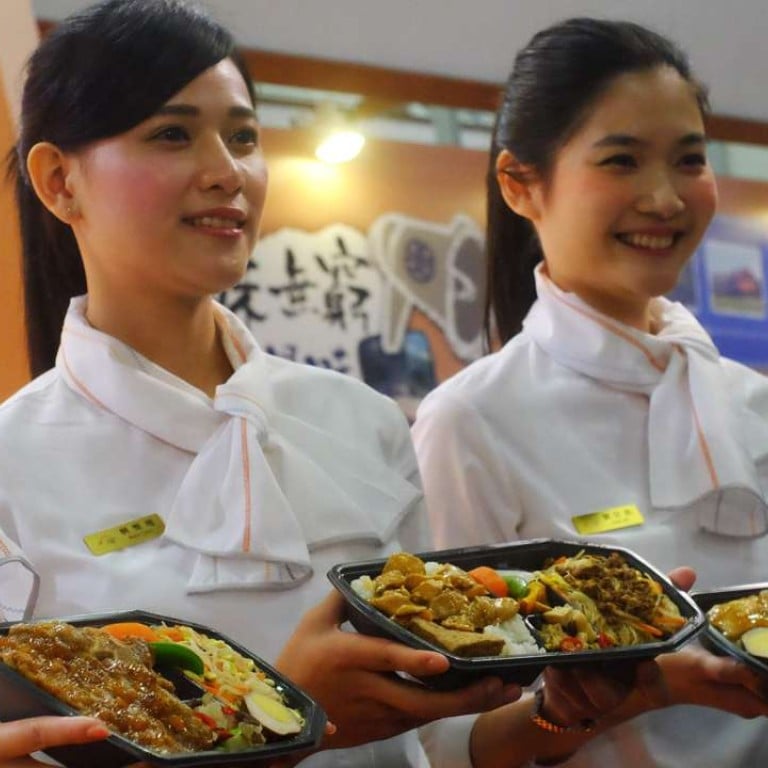
Retro Taiwan lunch boxes milk nostalgia for slow train journeys
Meals of meat, pickles and rice once a staple of rail travel are a comfort-food choice for fans today – even if they’re not travelling, they can buy one when passing a train station or at a convenience store
Once served as no-frills sustenance for train passengers in Taiwan, simple rice lunch boxes are selling in their millions across the island, a food trend fuelled by nostalgia.
Known as railway biandang, which means “convenience” in Chinese, the meals have changed little over the decades.
Traditionally a pragmatic combination of braised or fried meat and pickles piled onto steamed white rice – ingredients designed to endure long train journeys – they are now seen as an enduring symbol of the “good old days”, when rail travel trumped planes and cars.
While they used to be the preserve of passengers looking for a low-cost meal, now fans are picking them up as comfort food, whether they are taking a journey or not.
“It reminds me of when I was little, when I would take the train to Yilan with my family,” says a 42-year-old woman buying boxes of classic pork chop rice from a shop at a Taipei station to take home.

Although there are now fancier, pricier, lunch boxes containing everything from red quinoa rice to rosemary chicken, this customer still prefers the traditional combination.
“It’s just tastier – the rice tastes better,” she says.
The Taiwan Railways Administration (TRA) expects to sell a record 10 million of the popular lunch boxes this year, pulling in roughly NT$700 million (HK$172 million). The TRA still sells the biandang on trains and in stations – trolleys wend their way through carriages, or passengers can order them in advance.
Private vendors are also cashing in, running their own kiosks in or nearby stations, while convenience store chains now sell “railway style” lunch boxes too.

As well as a nostalgia hit, price is still a major draw – the classic combo costs just NT$60.
“Like our ticket prices, our biandang prices haven’t increased for many years,” says Michael Lee, deputy general manager of the TRA’s food and services division.
While more than 230 million train journeys a year are still made in Taiwan each year, increased plane and car travel has hit some lunch box sellers.
Like our ticket prices, our biandang prices haven’t increased for many years
Tseng A-fa has seen sales at his store in the northern beachside village of Fulong fall since a tunnel opened in 2006 making car travel easier.
“Fewer and fewer trains now stop at Fulong,” he said at a recent culinary fair in the capital, Taipei, that featured a section dedicated to railway lunch boxes.
Still Tseng, 70, says he continues to sell 1,000 lunch boxes each day and will continue with his business – which has loyal customers.

Fair visitor Vicky Chen, 32, shunned trendier versions to buy one of Tseng’s traditional lunch boxes.
“I used to buy one on the platform to take onto the train,” she said, recalling the days of commuting home as a university student in the eastern county of Hualien. “I miss that feeling.”

.png?itok=arIb17P0)